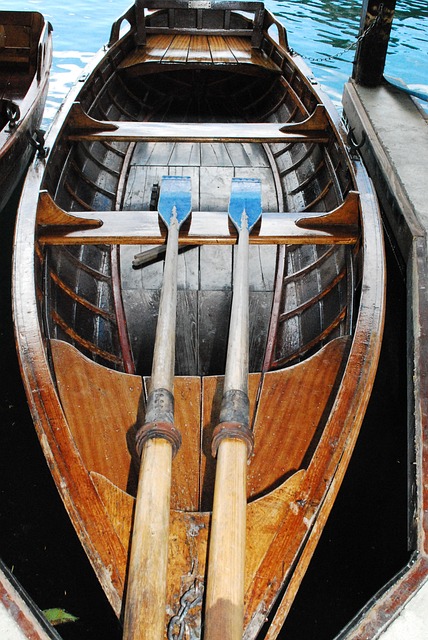Aluminum canoes have long been a popular choice among paddlers due to their durability, affordability, and versatility. One crucial factor that plays a significant role in the performance and usability of an aluminum canoe is its weight. In this article, we’ll delve into the various aspects of aluminum canoe weight, including its significance, influencing factors, benefits, and frequently asked questions.
The Significance of Aluminum Canoe Weight
The weight of an aluminum canoe holds immense importance, as it directly affects the canoe’s performance, portability, and ease of use. A lighter canoe typically offers several advantages:
| Aspect | Benefits of a Lighter Canoe |
|---|---|
| Ease of Portage | Portaging becomes easier with a lighter canoe. Reduced weight means less strain on muscles, making it more manageable to navigate challenging terrains. Each step becomes smoother and more comfortable, enhancing the overall journey. |
| Maneuverability | A lighter aluminum canoe exhibits greater maneuverability on water. It responds swiftly to paddle strokes, allowing effortless direction changes and navigation through winding waterways. This agility establishes a seamless connection between paddler and vessel. |
| Transportation | Transporting the canoe becomes simpler with less weight. The loading process is easier, causing minimal strain on the vehicle’s engine. Reduced fuel consumption and easier loading/unloading contribute to a smoother journey to the launch point. |
| Solo Paddling | Solo paddling benefits from a lighter canoe. Enhanced control and maneuverability make it easier to navigate calm waters or challenging currents alone. Whether for introspection or adventure, a lighter canoe aligns with the paddler’s intentions. |
Factors Influencing Aluminum Canoe Weight
When it comes to the weight of an aluminum canoe, several intricate factors come into play, each contributing to the final outcome. These elements interweave to create a canoe that is not just a vessel for paddling, but a balance of engineering, material science, and design artistry. Let’s delve into these factors in detail:
Material Thickness
The very foundation of an aluminum canoe’s weight rests upon the thickness of the aluminum sheets used in its construction. This factor serves as the cornerstone of structural integrity, directly influencing the equilibrium between strength and weight. In essence, material thickness dictates the canoe’s robustness and durability. Here’s a table illustrating this concept:
| Material Thickness | Impact on Weight |
|---|---|
| Thicker Sheets | More structural integrity but heavier |
| Thinner Sheets | Reduced weight but potential compromise in strength |
Construction Method
The artistry of crafting an aluminum canoe extends to the construction method employed. The choice between riveting and welding crafts a distinctive trajectory for the canoe’s weight. Riveting, with its interlocking components, and welding, with its seamless joints, manifest differently in terms of weight.
- Riveting: Involves multiple connecting pieces, potentially adding weight;
- Welding: Requires fewer connections, contributing to a lighter canoe.
Size and Shape
The dimensions of an aluminum canoe play a symphony with its weight. The interplay between size and shape orchestrates a dance that cannot be ignored. Longer, wider, and deeper canoes inevitably carry more weight due to the extended surface area. Additionally, canoes with intricate shapes necessitate additional materials for construction.
Imagine a sleek, elongated canoe gliding gracefully on the water’s surface. Its weight, influenced by the generous expanse of its dimensions, finds equilibrium between the promise of adventure and the physical reality of mass. Curves and contours, meticulously sculpted, require the touch of craftsmanship to breathe life into this vessel.
Accessories and Features
The narrative of an aluminum canoe’s weight is further enriched by the presence of accessories and features. These components embellish the canoe’s functionality, but their inclusion carries a weighty cost. We encapsulate this interlude within a compelling table:
| Accessories and Features | Impact on Weight |
|---|---|
| Seats, Thwarts, Yokes | Enhanced functionality but added weight |
| Gunwales and Enhancements | Beautification but increased mass |
Aluminum Alloy
The very soul of an aluminum canoe is embodied by the choice of aluminum alloy. The journey from lighter to sturdier alloys is a tale of compromise.
- Lighter Alloys: Contributing to reduced weight but potentially at the expense of strength;
- Sturdier Alloys: Ensuring robustness while embracing a higher weight.
Benefits of Different Aluminum Canoe Weights

When it comes to embarking on aquatic adventures, aluminum canoes emerge as reliable companions. These versatile vessels come in a spectrum of weights, each bestowing a unique set of advantages upon paddlers. From the nimble lightweights to the steadfast heavyweights, the diverse range of aluminum canoe weights ensures that enthusiasts can find their perfect match.
Lightweight Canoes (under 40 lbs)
For those who seek the thrill of solitary journeys or the challenge of navigating treacherous landscapes, lightweight aluminum canoes beckon. Weighing in at under 40 pounds, these canoes are the embodiment of agility. Picture yourself gliding through the water effortlessly, maneuvering with grace around obstacles that would have given bulkier vessels a run for their money.
- Effortless Portaging: Carrying your canoe from one water body to another becomes a breeze. The minimal weight means less strain on your muscles, making portaging a less daunting task;
- Enhanced Maneuverability: The feather-light nature of these canoes allows you to pivot swiftly, gracefully navigating through tight spots and tricky passages;
- Solo Adventuring: If you’re a lone explorer, these canoes are your perfect companions. Their weight ensures that you can handle them single-handedly without breaking a sweat;
- Rugged Terrain Mastery: Whether you’re traversing rocky shores or winding through dense vegetation, the lightweight design lets you conquer terrains that would be challenging for bulkier boats.
Medium-weight Canoes (40-60 lbs)
A harmonious blend of portability and robustness characterizes the medium-weight aluminum canoes. With a weight ranging from 40 to 60 pounds, these vessels cater to the diverse aspirations of paddlers. From serene lakes to moderate whitewater rivers, they adapt to varying environments with remarkable ease.
- Versatility: Medium-weight canoes are your go-to option for diverse paddling experiences. They can handle tranquil waters for leisurely days as well as moderate currents for a touch of excitement;
- Balanced Durability: The medium weight strikes a balance between durability and ease of handling. These canoes can endure the rigors of frequent paddling without sacrificing maneuverability;
- Family Adventures: Embarking on a family escapade? These canoes provide ample space and stability for your loved ones to join in the fun while still maintaining a manageable weight.
Heavyweight Canoes (60+ lbs)
In the realm of aluminum canoes, the heavyweights reign supreme in terms of stability and robustness. While their weight might pose a challenge during transport, their advantages outweigh this drawback. Ideal for fishing enthusiasts, leisurely outings, and those who prioritize a steady ride, heavy aluminum canoes offer an unrivaled experience.
- Stability Personified: If you fancy fishing or simply crave a reassuringly steady paddle, heavy canoes are your answer. They remain unfazed by gentle ripples or sudden movements, providing you with a stable platform to enjoy your chosen activity;
- Enhanced Endurance: Heavy canoes are built to endure prolonged use, making them an investment that promises years of dependable service;
- Leisurely Paddling: Sometimes, the joy lies not in racing the currents but in leisurely exploration. Heavy canoes grant you the luxury of time, allowing you to savor every moment on the water without haste.
Conclusion
Aluminum canoes come in various weights, each offering unique advantages and considerations. The weight of the canoe plays a crucial role in determining its usability, maneuverability, and durability. By understanding the factors influencing aluminum canoe weight, potential buyers can make informed decisions that align with their paddling preferences and needs. Whether you prioritize portaging, maneuverability, stability, or a balance of these factors, choosing the right aluminum canoe weight can enhance your overall paddling experience.
For better understanding of aluminum canoe, check out this video:
FAQ
Not necessarily. Advances in manufacturing techniques and materials have allowed manufacturers to create lightweight canoes without sacrificing durability. However, extremely lightweight models may be more susceptible to damage in rugged conditions.
While you can’t significantly alter the weight of an already manufactured canoe, you can choose from available weight options when purchasing. Keep in mind that modifications like adding accessories can affect the canoe’s weight.
The best canoe choice depends on your intended use. Light canoes are great for portaging and maneuverability, but if you’re planning to carry heavy loads or prefer stability over agility, a slightly heavier canoe might be a better fit.
Regular maintenance, including cleaning and proper storage, can help prevent unnecessary weight gain due to corrosion. Also, avoid overloading your canoe with excessive gear, as this can impact performance and increase wear and tear.
Manufacturers often provide weight capacity recommendations for their canoes. Exceeding these limits can lead to reduced performance, instability, and potential damage to the canoe.



